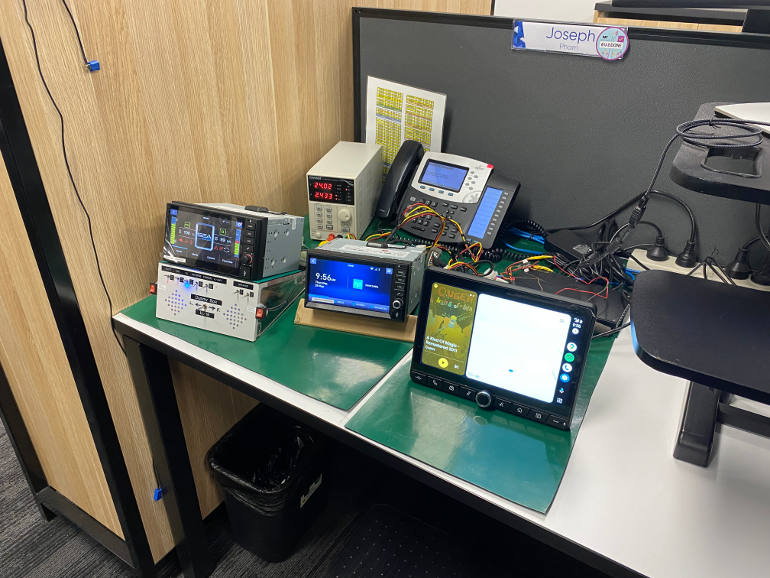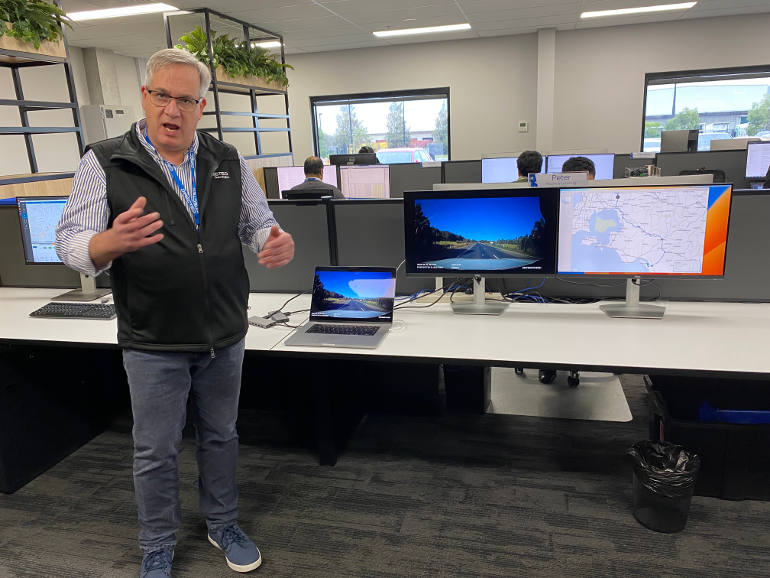On a cold day in Melbourne, hundreds of local industry leaders and CEOs of global organisations gathered outside the offices of Directed Technologies for the opening of their Connected Mobility Innovation Centre. It wasn’t until I was inside and thawed out that I realised the significant influence the 200+ employees working in the building will have on the future of connected fleets.
Mark Whitmore, Global Sales Director at Directed Technologies, hosted the tour through the facility which had the crowd oohing and ahhing at every turn.
“We are 220 people across the group, but the technologies group is 85 people,” explained Whitmore. “So this is a story of our journey over the years. It’s been humble beginnings and we’re very grateful for the support of our partners. It is a fascinating story to look at where they began selling car alarms, to where we are today.”
“What’s unique and really exciting about this facility is it’s local, and we have the hardware engineers, the firmware engineers, the cloud engineers, the GUI engineers all working collaboratively with production and manufacturing in one facility. It gives us a localisation capability, which is pretty unparalleled in Australia. It gives us an agility; it gives us the ability to respond to our customers. And it’s a really local Australian capability, which I think is important for the industry.”
We walked through the engineering section and I meet Joseph Pham who has the task of testing all of the equipment to make sure it works as planned. Around him were a number of multimedia units from different manufactures and on his dual screen setup were meticulous instructions for testing each function within the unit.


The we got a presentation from Peter on the machine learning capabilities being developed to identify road hazards and traffic that can be fed into route planning decisions and provide local governments with real time information on potholes and damage to signs or street furniture.

“What we do with the standard dash cams is we take that that video footage that’s coming through and we process that after the fact,” explained Peter. “We identify street signs, we identify things like road issues that might come up so as we’re approaching, we take out of that video road issues.”
“We feed that data back into transport operators to allow them to reroute their trucks and commercial vehicles around those problematic routes. Once they repaired we can identify that in the video see that there’s a bitumen laid and we can then again close that loop to inform those transport operators they can reroute back along there.”
“So it’s really around safety, efficiency and maintenance of those and how we can enhance transport operator operations to make it a little bit more efficient and maintenance friendly.”

Next was Daniel and showed us geospatial software can be used to connect vehicle and traffic lights to provide a green light corridor on major routes.
“Every time the vehicle stops it requires a little fuel to get moving again. So if we can reduce the number of stops, we can save fuel,” explains Daniel. “So one way to achieve this is to use real time traffic lights and integrate it into the truck navigation.”
He then showed an animated example of a B-Double approaching two sets of traffic lights.
“So we have two traffic lights shown here by the green circles. Information about the next traffic light is also shown on the on the left showing it’s going to change in three seconds. So the truck is going to speed up to the recommended speed to catch the next green light so there’s no need to slow down as it will be green by the time the truck arrives.”
“The goal is to have the truck drive as smooth as possible to navigate the green light corridor. So the three main benefits are fuel consumption and reduced emissions, reduce wear and tear to the vehicle and the road network and also increase safety because we reduce the risk of collisions.”
Then John showed us how advanced data analytics combined with artificial intelligence programs can turn enormous amounts of data into useful insights for Fleet Managers and infrastructure planners.
“So the work of the data analytics team is to grapple with the billions of data points that we collect from devices every day to drive actionable insights for our customers,” explains John.
“So Chat GPT is obviously bringing the power of AI to the masses. And we’re now implementing a similar natural language querying system which allows customers to just simply ask questions about the data and find what they need. So it no longer needs to be something that we’ve put on the dashboard for them, they can say, ‘I’d like to see how my safety events are trending for next week, last week’ and compare different metrics.”







